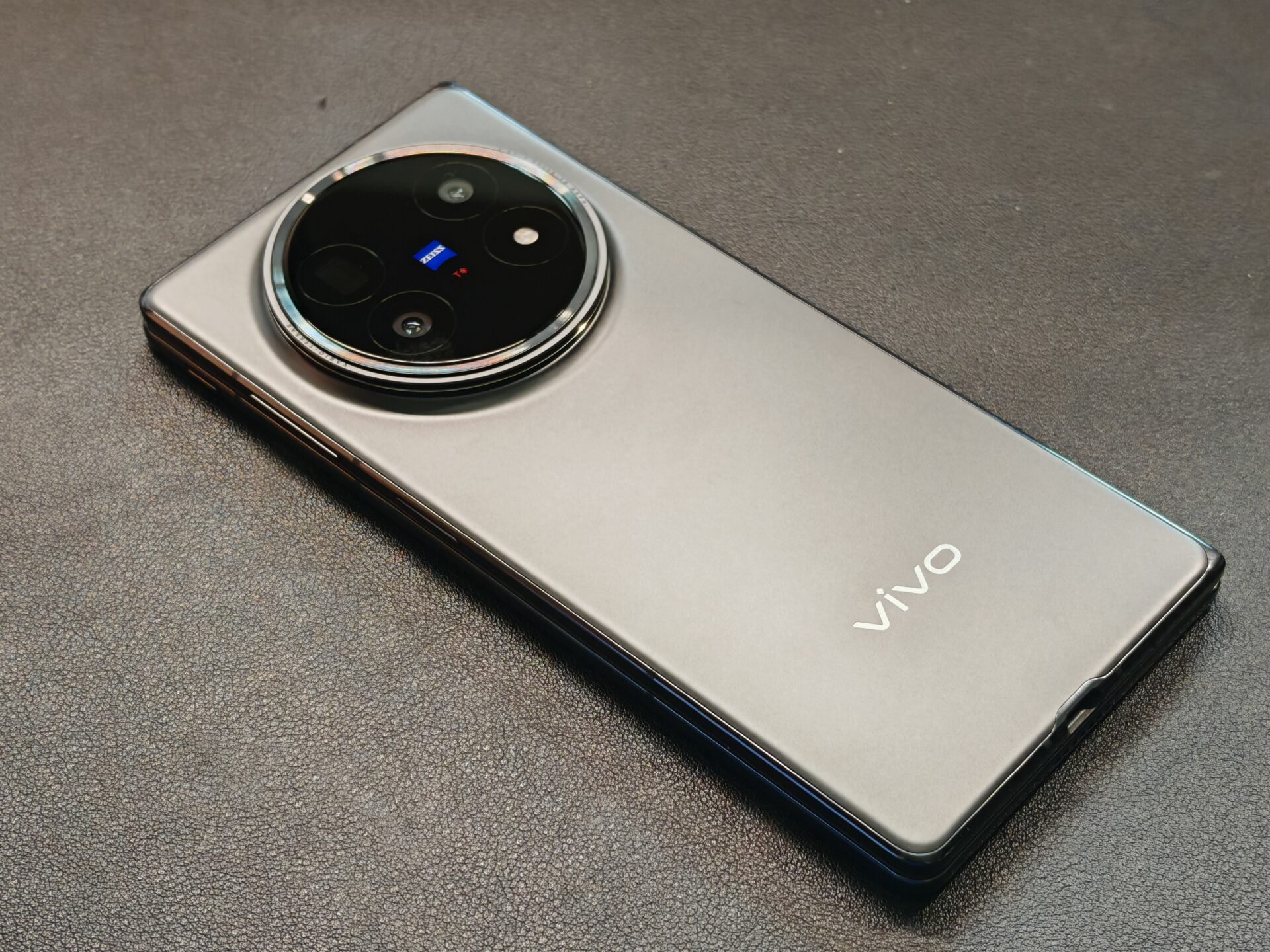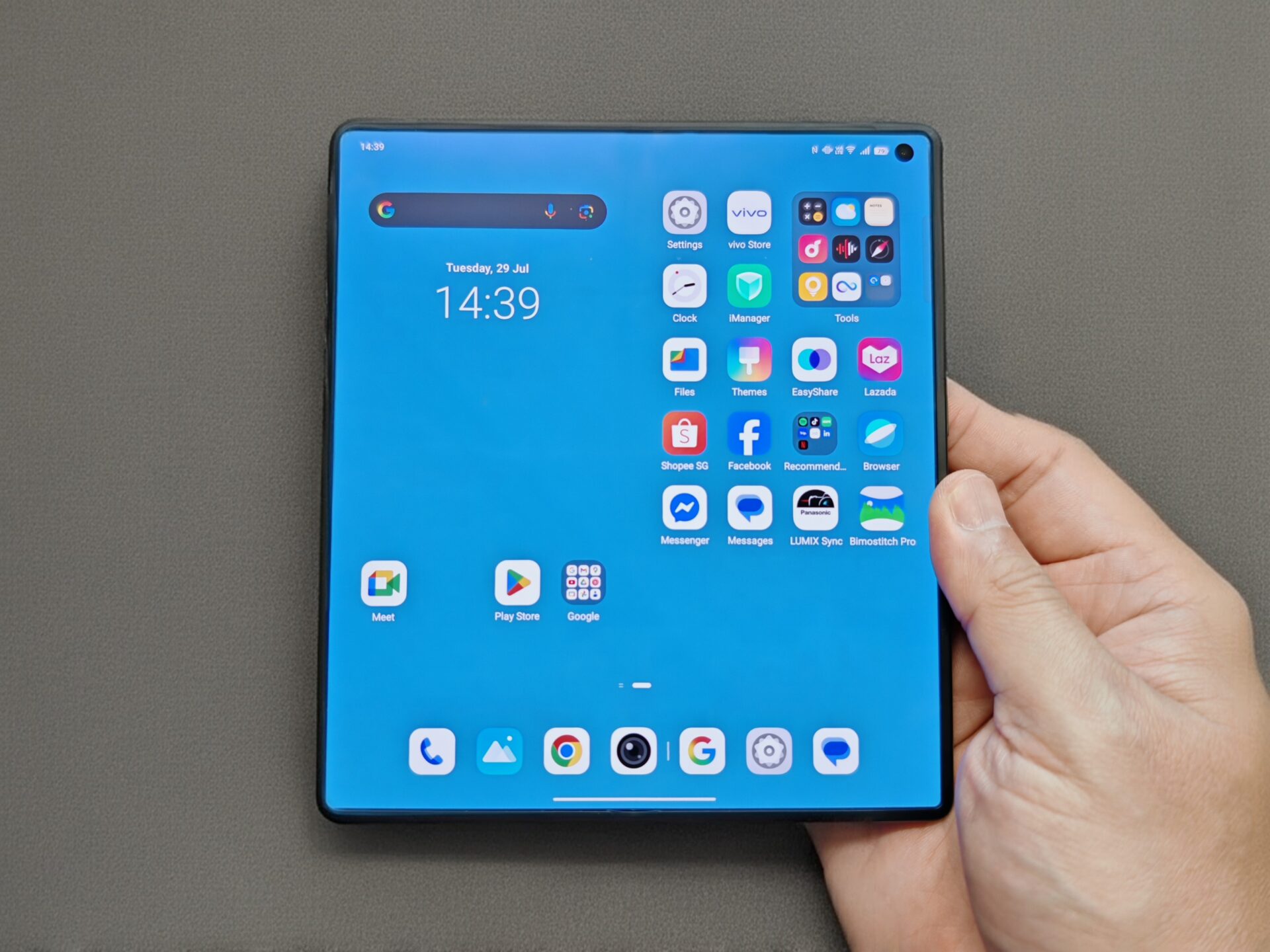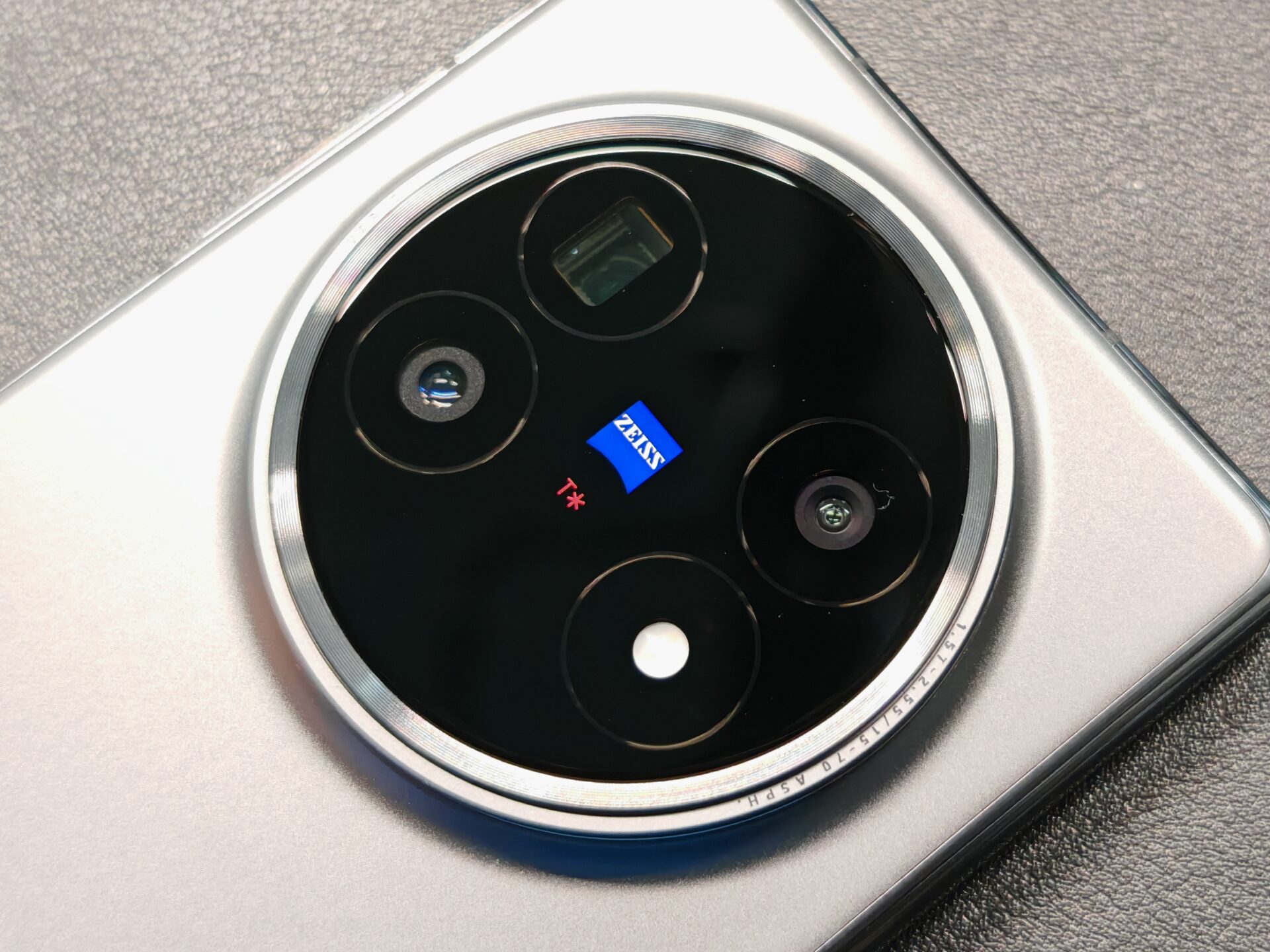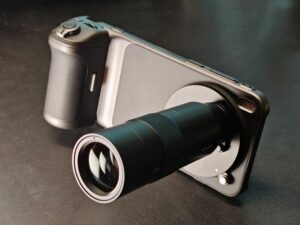If you’re looking for a foldable phone now, the good news is that you’re somewhat spoilt for choice. The latest to join this high-end S$2,000-plus segment is the Vivo X Fold 5, which looks and feels the part with its first impressions.
The Chinese company’s latest phone weighs just 217g and is a sliver thicker at 9.2mm (folded) than the Samsung Galaxy Z Fold 7 and Honor Magic V5. That’s not to mention the Oppo Find N5 out just in February this year.
How does the Vivo X Fold 5 fare in this competitive field field? Besides its slimness, the design feels sleek and solid, on the whole. It comes in “titanium grey”, which feels a bit more professional than showy.
A hinge that folds flat leaves minimal gaps, which speaks of the engineering behind the phone. It’s nice to be able to open the foldable screen with some smooth, balanced resistance.

The hinge, made from a mix of steel and carbon fibre, remains firm yet not overly stiff, allowing users to position the phone easily for watching video clips or making calls.
Vivo claims the hinge can withstand up to 600,000 folds over its lifespan. Although a crease appears on the main screen, it is less intrusive than on some rivals, albeit slightly more noticeable than on the Honour Magic V5.
The water and dust resistance of this device is rated with IPX8 and IPX9 water protection, as well as IP5X dust resistance. Still, the foldable is not built for full submersion, so it’s best to keep it away from deep water.
When unfolded, the phone reveals an 8.03-inch AMOLED main display and an outer cover screen measuring 6.53 inches. Both reach up to 4500 nits of peak brightness, so outdoor use under bright sunlight is no problem.



Both displays support crisp 2K+ resolution, a 120Hz refresh rate, HDR10+, and Dolby Vision, ensuring vibrant and smooth viewing whether you are reading or watching videos. You can use the cover screen for all basic phone functions, making it easy to keep the phone folded when you prefer.
In the X Fold 5, Vivo has continued its camera partnership with lens maker Zeiss. Here, there are three 50-megapixel rear cameras – a main sensor from Sony, an ultra-wide lens for a broad view, and a telephoto lens with 3x optical zoom, as well as up to 100 times digital zoom.
Two 20-megapixel front-facing cameras are located at the top of the exterior and interior screen, so you can take selfies or make quick video calls easily.
The lenses are said to utilise special Zeiss coatings to reduce unwanted reflections, flare, and ghosting. While the highest zoom level primarily serves to showcase capabilities, skin tones and accurate colours are more important.
Images from my test show very good imaging capabilities even though the Zeiss colour is cooler at times. On the flip side, skin tone can be a tad warmer, but the Vivo foldable phone can produce very good photos with beautiful filters, as long as you keep the zoom range within 10x.








Built-in AI features enhance photo clarity and low-light shots, but can be overcooked in some situations. And remember to keep the zoom below 10x to avoid AI sharpening if you prefer natural-looking photos.
Since colour and sharpness can be subjective to different users, it is best to test them out in a shop to see if you like what you’re getting.
When using the rear camera for selfies, the phone does not seem to provide any visual cue – such as palm detection – to indicate when it is ready to capture, despite having this function. There is also no smile detection if you delve into the settings, so users unfamiliar with the camera’s quirks will likely have to rely on the timer to take a shot.
Notably, the phone is powered by Qualcomm’s older Snapdragon 8 Gen 3 processor, paired with fast 16GB LPDDR5X memory and 512GB of storage. This setup is more than capable of handling heavy multitasking, editing apps, and browsing lots of tabs on Google Chrome.
However, this isn’t the latest Qualcomm processor – the Snapdragon 8 Elite found on the Honor Magic V5 and Samsung Galaxy Z Fold 7, which is a bit of a surprise for a top-end flagship model.

Vivo does attempt to make things easy to use. An innovative software feature called Origin Workbench enables you to run up to five apps simultaneously, for example.
AI-powered tools facilitate live transcription and translation, making them ideal for meetings and travel. Additionally, the built-in Google Gemini AI tools on the Android operating system provides extra assistance for planning and productivity.
Powering everything on the Vivo X Fold 5 is a large 6,000mAh Li-ion battery, allowing you to get through the day easily. Wired charging is also rapid, taking the battery from nearly empty to full in under an hour using its 80W fast charger. Additionally, there is support for convenient 40W wireless charging.
Costing S$2,499 in Singapore, the Vivo X Fold 5 costs more than the Honor Magic V5 (S$2,199) but appears more affordable Samsung Galaxy Z Fold 7 (S$2,878 for 512GB version with 12GB memory instead of 16GB), at least before discounts on the street.
You wish Vivo had included the latest Qualcomm processor to more strongly compete with its rivals. The foldable phone’s Snapdragon 8 Gen 3 processor, while still capable, is slower than its rivals, which may mark it down for users seeking the latest and greatest.
The Vivo X Fold 5 is definitely another competent option for folks seeking a foldable phone today. How attractive it is depends on how good of a discount you can get in the stores over the sticker price.






